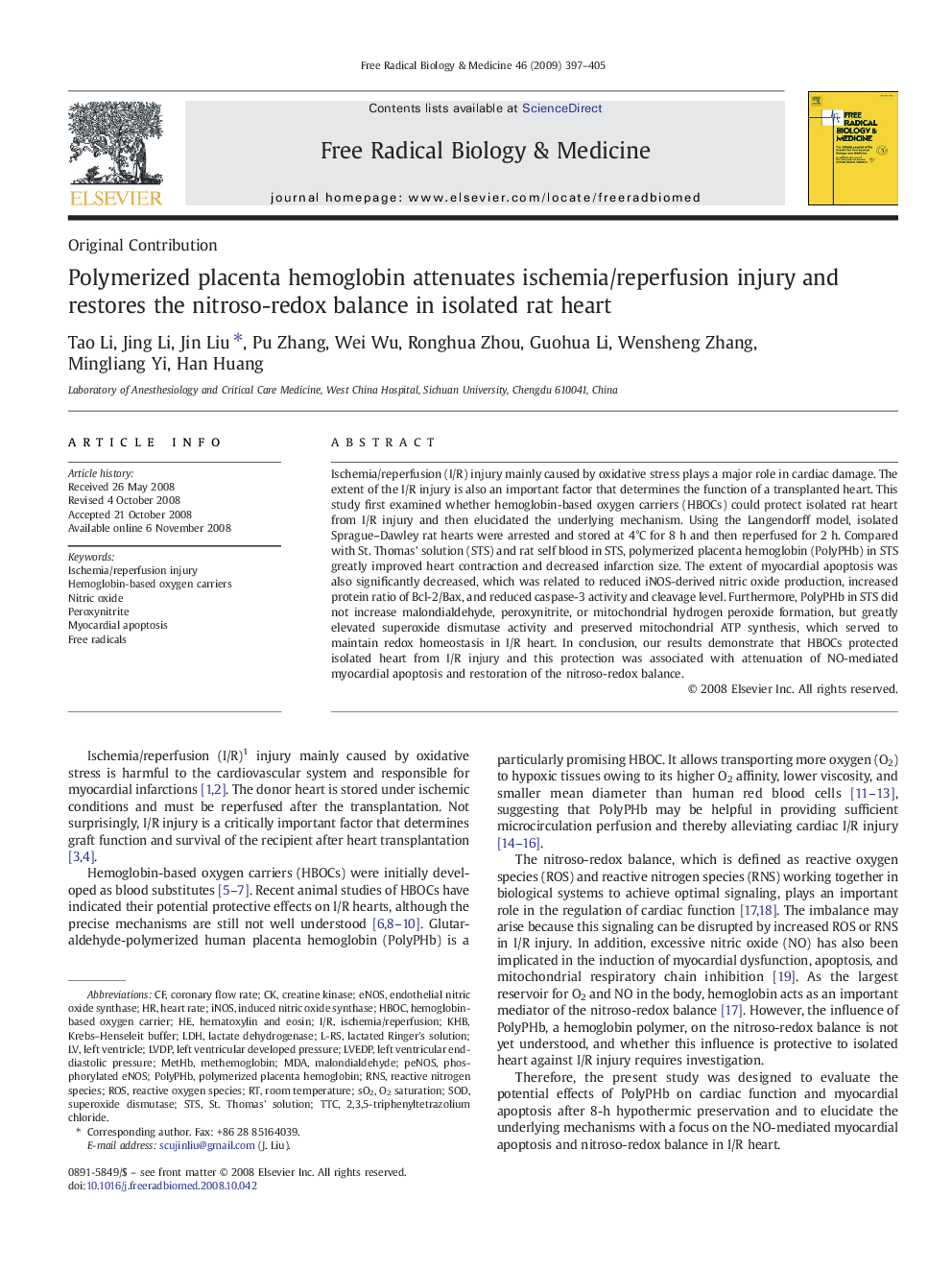| Article ID | Journal | Published Year | Pages | File Type |
|---|---|---|---|---|
| 1910392 | Free Radical Biology and Medicine | 2009 | 9 Pages |
Ischemia/reperfusion (I/R) injury mainly caused by oxidative stress plays a major role in cardiac damage. The extent of the I/R injury is also an important factor that determines the function of a transplanted heart. This study first examined whether hemoglobin-based oxygen carriers (HBOCs) could protect isolated rat heart from I/R injury and then elucidated the underlying mechanism. Using the Langendorff model, isolated Sprague–Dawley rat hearts were arrested and stored at 4°C for 8 h and then reperfused for 2 h. Compared with St. Thomas' solution (STS) and rat self blood in STS, polymerized placenta hemoglobin (PolyPHb) in STS greatly improved heart contraction and decreased infarction size. The extent of myocardial apoptosis was also significantly decreased, which was related to reduced iNOS-derived nitric oxide production, increased protein ratio of Bcl-2/Bax, and reduced caspase-3 activity and cleavage level. Furthermore, PolyPHb in STS did not increase malondialdehyde, peroxynitrite, or mitochondrial hydrogen peroxide formation, but greatly elevated superoxide dismutase activity and preserved mitochondrial ATP synthesis, which served to maintain redox homeostasis in I/R heart. In conclusion, our results demonstrate that HBOCs protected isolated heart from I/R injury and this protection was associated with attenuation of NO-mediated myocardial apoptosis and restoration of the nitroso-redox balance.
